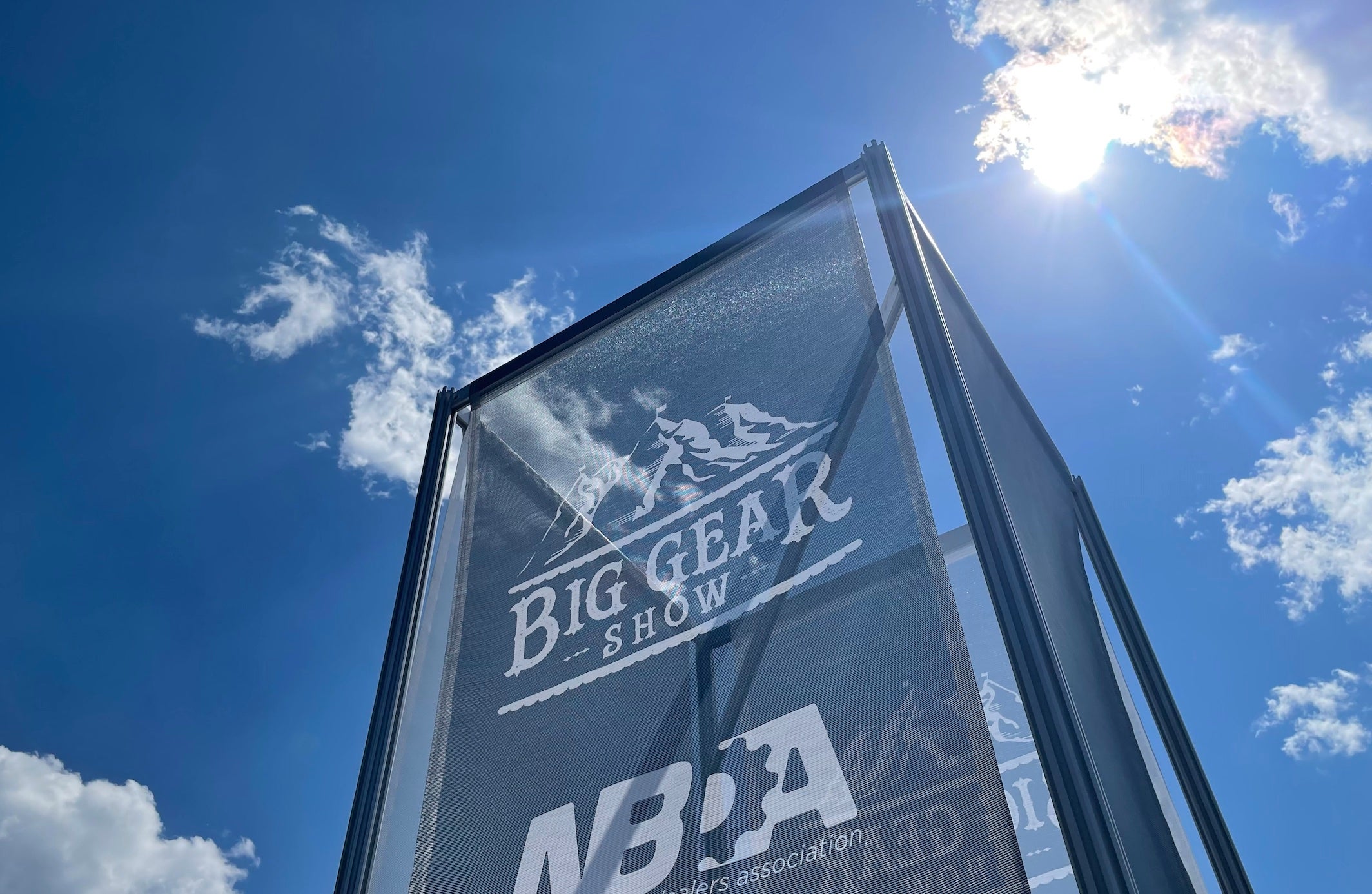As booths break down and drinks come out at the second annual in Park City, Utah, reflecting on the two-day outdoor event largely called it a success, even if it wasn’t what they were expecting. While many exhibitors said they didn’t see the wholesale buyer traffic they wanted, what the show lacked in numbers it made up for in quality of interactions.
“It’s been a good show in that I could spend a lot of time with the retailers that did come by, but we needed three times the number of people who did come by to make this worthwhile,” said Tom Hathaway, director of North American sales at . “I don’t know if it’s the economy, the way things are now after the pandemic, or what other factors played into that.”
Final numbers provided by The Big Gear Show for August 2 and 3 were 442 attendees from 37 states representing 773 retail outlets; 174 exhibit booths representing 255 brands; and 54 vetted journalists.
“The second-ever TBGS show was a bigger gathering than our launch last year, proving the concept of our unique event platform for the greater outdoor industry,” said Kenji Haroutunian, BGS’s show director. “We continued positive momentum despite significant headwinds with travel costs, supply chain challenges, and the ongoing pandemic effects. Quality of interaction was the name of the game at BGS 2022, and the cast is set for measured growth into the future.”
A Show to Meet the Moment
It takes guts in this persistently pandemic-challenged world to launch a new outdoor industry trade show, and the second year of The Big Gear Show enters an arena that was challenging even before COVID. BGS sees itself as a boutique outdoor hardgoods show—bikes and kayaks more the focus than lifestyle apparel and accessories—and has claimed the first week of August on the annual show calendar as its staging window. But BGS comes on the heels of June’s Outdoor Retailer in Denver and OutDoor by ISPO in Munich, and just before other similar events including the Outdoors for All Expo in Cincinnati and ANME in Las Vegas later this month. Some exhibitors said that while they don’t want to miss out on any shows, they are beginning to consider more carefully which shows they’ll attend.
“Trade shows are becoming more regional,” said Ryan Flynn, director of global sales at . “Even ISPO seemed more like a German regional show than a huge international show. We’ve made some great industry contacts here [at BGS], but we’re not seeing a lot of retailers. I think more and more wholesale is being done directly online and by our sales reps. With the complications of travel, it’s making us think about what shows we attend and why.”
For Nick Lucivero, national sales manager at , however, BGS was an unequivocal success. He says he was able to make inroads through casual meetings and at Black Diamond’s happy hour the first day.
“Our Windsun Hat does really well in the sailing world, and this has been great for getting it in front of more reps from the outdoor industry,” he said, adding that having a booth by the paddle sports section at Deer Lake was a major advantage—something impossible to replicate at indoor trade shows. “We’ve made some good contacts and sales from this show.”
Many exhibitors cite being outside as a big upside of BGS. It made testing the many e-bikes easy, and Deer Lake was perfect for taking canoes, kayaks, and SUPs out for a spin. Rain on the first day was even viewed by some as an advantage for testing—or proving—the durability and weatherproofing of gear.
At the beginning of the second day, exhibitors sounded upbeat and happy to be at the event, even if relatively few orders were being written. The thumps and cheers of corn hole games were more frequent than huddled sales-order negotiations. Exhibitors were able to visit neighboring booths and commiserate over supply chain issues, discuss industry trends, and talk shop about outdoor recreation in general.
Christina Redman, a buyer with , said that the show felt relaxed and allowed her time to make deeper connections with potential suppliers.
“The timing works because I’m in between the rush of fall and spring orders, so I have more time to try out products and really get to know people in the industry,” she said, adding that being in Asheville, North Carolina, it can be difficult for her to establish relationships with suppliers who are based in the West. “I’m also able to really get to know the products we buy. We carry Kokopelli [pack rafts], and I was able to take one out on the lake and experience how good it is firsthand.”
Organizers Left Happy
“I think it went well,” said Yoon Kim, BGS’s marketing director. “What I’m hearing is there are places where we can improve, for sure, and I think it’s mostly about timing and the number of retailers at the show.”
Kim said BGS carefully vets applications for the show, including people registering as retailers and media. That selection process keeps numbers at BGS low by design—the caveat being that, although the show has fewer attendees than competing events, it allows for higher-quality interactions. “With a lot of shows, you get big numbers and are constantly busy, but there’s a lot of people essentially wasting exhibitors’ time,” Kim added. “They’re trying to sell the sellers something. Some people registering as media are there for the swag and don’t have legitimate outlets.”
Kim said he believes the conventional outdoor trade show model has changed and exhibitors and attendees want a different experience. “Exhibitors don’t want to be nickled and dimed under fluorescent lights; they want to have fun outside and have their products demoed. In that sense, I feel like we’ve captured that heart and spirit [of the industry], and you can see how stoked the people who come out are.”
And, while there was talk of the show’s current site being developed by Deer Valley and unavailable next year, Kim said he doesn’t believe the proposed project will happen in time to impact next year’s staging.
“If it does happen, it’s a lot easier to find another outdoor venue than an indoor one,” he said.


